Copyright
Table of Contents
Preface
About This Book
Interoperability
MPLS in the SDN Era
Live Book
Contents of This Book
Disclaimer
Conventions Used in This Book
Safari® Books Online
How to Contact Us
Acknowledgments
Chapter 1. Introduction to MPLS and SDN
The Internet
ISP Example Topology
Router Types in a Service Provider
BGP Configuration
BGP Route Signaling and Redundancy
Packet Forwarding in a BGP-Less Core
MPLS
MPLS in Action
The MPLS Header
MPLS Configuration and Forwarding Plane
Forwarding Equivalence Class
Again, What Is MPLS?
OpenFlow
OpenFlow—Flow-Based Forwarding
OpenFlow—Openness and P4
SDN
Separation of the Control and Forwarding Planes
SDN and the Protocols
The SDN Era
SDN-Era Use Cases
Chapter 2. The Four MPLS Builders
LDP
LDP Discovery and LDP Sessions
LDP Label Mapping
LDP and Equal-Cost Multipath
LDP Implementation Details
LDP Inter-Area
Protecting LDP Networks from Traffic Blackholing
RSVP-TE
RSVP-TE LSP Fundamentals
RSVP-TE in Action
RSVP-Constrained Paths and ECMP
Inter-Area RSVP-TE LSPs
RSVP Auto Tunnel
IGP and SPRING
SPRING in Action
SPRING Concepts
SPRING Adjacency Segments
A Comparison of LDP, RSVP-TE, and SPRING
BGP-Labeled Unicast
IGP-Free Large-Scale Data Centers
BGP-LU Configuration
Service Configuration in an IGP-Less Topology
BGP-LU—Signaling and Forwarding Plane
BGP-LU—SPRING Extensions
Chapter 3. Layer 3 Unicast MPLS Services
6PE: IPv6 Transport in an IPv4/MPLS Core
6PE—Backbone Configuration at the PEs
6PE—RR Configuration
6PE—Access Configuration at the PEs
6PE—Signaling
6PE—Forwarding Plane
BGP/MPLS IP Virtual Private Networks
Attachment Circuits and Access Virtualization
L3VPN in a Nutshell
L3VPN—Signaling
L3VPN—Forwarding Plane
L3VPN—Backbone Configuration at the PEs
L3VPN—RR Configuration
L3VPN—VRF Configuration at the PEs
L3VPN—Routing Tables in Junos
L3VPN—Service Label Allocation
L3VPN—Topologies
L3VPN—Loop Avoidance
Internet Access from a VRF
Route Target Constraint
RTC—Signaling
RTC—RR Configuration
RTC—PE Configuration
Coupling MPLS Services to Transport Planes
Configuring Several Loopbacks in the Default Instance
Signaling LSPs to Different Loopback Addresses
Changing the Service Routes’ BGP Next Hop
Chapter 4. Internet Multicast Over MPLS
IP Multicast
IP Multicast Protocols
IP Multicast Modes
Classic Internet Multicast
Starting Multicast Sources and Receivers
Signaling the Multicast Tree
Classic Internet Multicast—Connecting Multicast Islands Across the Core
Signaling Join State Between Remote PEs
Carrier IP Multicast Flavors
Direct Inter-PE Model—PE-to-PE PIM Adjacencies over Unicast IP Tunnels
Direct Inter-PE Model—PE-to-PE PIM Adjacencies over Multicast IP Tunnels
Direct Inter-PE Model—PE-PE PIM Adjacencies over MPLS Label-Switched Paths
Beyond the Direct Inter-PE Model—Not Establishing PE-PE PIM Adjacencies
Internet Multicast over MPLS with In-Band Multipoint LDP Signaling
Multipoint LDP
In-Band Signaling
Life of a C-Multicast Packet in an mLDP P2MP LSP
CE Multihoming
mLDP In-Band and PIM ASM
Other Internet Multicast over MPLS Flavors
Chapter 5. Multicast VPN
BGP Multicast VPN with mLDP Transport
MVPN Address Family
Configuring BGP MVPN
MVPN Site AD
Signaling C-Multicast (S, G) Join State with BGP
Signaling Provider Tunnels—BGP and the PMSI Attribute
Signaling Provider Tunnels—Multipoint LDP for Transport
BGP Multicast VPN with RSVP-TE P2MP Transport
Advertising the Inclusive PMSI—RSVP-TE P2MP
Advertising Selective PMSIs—RSVP-TE P2MP
Signaling P- Tunnels with RSVP-TE P2MP
BGP Multicast VPN with Ingress Replication
Inclusive PMSI—IR
Selective PMSI—IR
BGP Multicast VPN with Other P- Tunnel Flavors
CE Multihoming in BGP Multicast VPN
Egress PE Redundancy
Ingress PE Redundancy
Choosing the Best RD Scheme
BGP Multicast VPN with C-PIM ASM
ASM Mode
C-Rendezvous Point—PE and CE Configuration
C-Multicast Signaling—ASM Mode with C-RP at the PEs
Noncongruent C-Unicast and C-Multicast
Chapter 6. Point-to-Point Layer 2 VPNs
L2VPN in a Nutshell
L2VPN Use Cases
L2VPN Topological Classification
L2VPN Signaling and Transport
P2P L2VPN—Varied Access Technologies
L2VPN Flavors Covered in This Book
VPWS Signaled with BGP
BGP L2VPN Address Family
BGP VPWS Configuration at the PEs
BGP VPWS Signaling
L2VPN Forwarding Plane
BGP VPWS—CE Multihoming to Several PEs
Ethernet OAM (802.3ah, 802.1ag)
BGP VPWS—VLAN Tag Multiplexing
BGP VPWS—VLAN Tag Translation and Manipulation
BGP VPWS—PW Head-End (PWHE)
BGP VPWS—Load Balancing
VPWS Signaled with LDP
LDP VPWS Configuration at the PEs
LDP VPWS Signaling and Forwarding Planes
LDP VPWS—CE Multihoming and PW Redundancy
LDP VPWS—VLAN Tag Multiplexing
LDP VPWS—VLAN Tag Translation and Manipulation
LDP VPWS—PWHE
LDP VPWS—FAT
Chapter 7. Virtual Private LAN Service
Introduction to VPLS
VPLS Signaled with BGP
BGP VPLS Configuration
BGP VPLS Signaling
BGP VPLS—Efficient BUM Replication
VPLS Signaled with LDP
LDP VPLS Configuration
LDP VPLS Signaling
LDP VPLS—Autodiscovery via BGP
VLANs and Learning Domains in VPLS
VPLS in default VLAN mode
Junos VPLS Instances—Normalized VLAN Mode
Junos VPLS Instances—VLAN-Free Mode
Junos VPLS Instances—VLAN-Aware Mode
Junos Virtual Switches
Integrated Routing and Bridging in VPLS
IRB Configuration in Junos VPLS Instances
IRB Configuration in Junos Virtual Switches
IRB Configuration in IOS XR
VPLS—IRB Redundancy and Traffic Tromboning
Hierarchical VPLS
H-VPLS Model with LDP Signaling
H-VPLS Models with BGP for Autodiscovery and Signaling
Chapter 8. Ethernet VPN
EVPN with MPLS Transport
EVPN Versus VPLS
EVPN Implementations
EVPN—This Book’s Topology
BGP EVPN Address Family
EVPN with MPLS Transport—Junos Configuration
EVPN MPLS—Inclusive Tunnel and Autodiscovery
EVPN with MPLS Transport—Advertising MACs
EVPN with MPLS Transport—Intra-VLAN Bridging
EVPN with MPLS Transport—Inter-VLAN Forwarding
EVPN with MPLS Transport—All-Active Multihoming
Ethernet VPN with VXLAN Transport
Data Center Challenges
VXLAN
EVPN with VXLAN Transport—Motivation
EVPN with VXLAN Transport—Forwarding Plane
EVPN with VXLAN Transport—Junos Configuration
EVPN with VXLAN Transport—Signaling
Provider Backbone Bridging EVPN
Introduction to PBB
PBB EVPN in a Nutshell
PBB EVPN Implementations
PBB EVPN in Action
PBB EVPN Configuration
PBB EVPN Signaling
Chapter 9. Inter-Domain MPLS Services
Inter-Domain Architectures
This Chapter’s Example Topology
Inter-AS Flavors
Inter-AS Option A
Inter-AS Option B
Inter-AS Option B—Signaling and Forwarding
Inter-AS Option B—Junos Configuration
Inter-AS Option B—IOS XR Configuration
Inter-AS Option B with Local VRF
Inter-AS Option C
BGP Sessions in Inter-AS Option C
Inter-AS Option C—Signaling and Forwarding
Inter-AS Option C—Configuration
Carrier Supporting Carrier
Inter-Domain RSVP-TE LSPs
Chapter 10. Underlay and Overlay Architectures
Overlays and Underlays
Overlay and Underlay Are Relative Concepts
Other Fundamental Concepts
Multiforwarder Network Devices
Single-Chassis Network Devices—Forwarding Plane
Single-Chassis Network Devices—Control Plane
Multichassis Network Devices
Legacy Data Center Networking
The Challenges of L2 Bridged Networks
Underlays in Modern Data Centers
Overlays in Modern Data Centers
Data Center Underlays—Fabrics
IP Fabrics—Forwarding Plane
IP Fabrics with Distributed-Only Control Plane
IP Fabrics with Hybrid Control Plane
Network Virtualization Overlay
Compute Controllers
Virtual Network Controllers
NVO—Transport of Control Packets
NVO—Agents
Chapter 11. Network Virtualization Overlays
OpenContrail in a Nutshell
OpenContrail Controllers
Compute, Gateway, and Service Nodes
Case Study: A Private Cloud
vRouter-VM Link Addressing
Initializing vNICs—XMPP as a DHCP-Like Protocol
Interconnecting VMs—XMPP as a BGP-Like Protocol
Interconnecting Subscribers to Cloud VMs
Communication Between Virtual Networks
Network Virtualization Overlay: L2_L3 Mode
VXLAN Refresher
Intrasubnet (L2) and Intersubnet (L3) Traffic
Interconnecting VMs—IntraSubnet Traffic with VXLAN
vRouter and Gateway Nodes—L2_L3 Mode
Integrating Legacy L2 World into the NVO
L2 Gateways and OVSDB
ToR Service Nodes
Binding a Bare-Metal Server to the Overlay
MAC Learning with OVSDB
Bare-Metal Servers and OVSDB—the Forwarding Plane
Chapter 12. Network Function Virtualization
NFV in the Software-Defined Networking Era
Virtual or Physical?
Applicability of NFV to Service Providers
NFV Practical Use Case
NFV Forwarding Plane
NFV—VRF Layout Models
Legacy VRF Layout—Transit VN Model
Modern VRF Layout—Two-VN Model
NFV—Long Version of the Life of a Packet
NFV Control Plane
NFV Scaling and Redundancy
NFV Scaling and Redundancy—Load Balancing
Service Instance Flavors
In-Network Service Instances
In-Network-NAT Service Instances
Transparent Service Instances
Network Service Function Outside a VM or Container
Chapter 13. Introduction to Traffic Engineering
TE Protocols
TE LSP Types
TE Information Distribution
TE Distribution via OSPF
TE Distribution via IS-IS
The TED
TE Static Constraints
TE Metric
Link Coloring—Administrative Group
Extended Administrative Groups
Shared Risk Link Group
Egress Peer Engineering
EPE Based on BGP-LU
Chapter 14. TE Bandwidth Reservations
TE Static Bandwidth Constraints
TE Bandwidth Attributes
Default TE Interface Bandwidth
Basic RSVP-TE Bandwidth Reservation
LSP Priorities and Preemption
Traffic Metering and Policing
TE Auto-Bandwidth
Introduction to Auto-Bandwidth
Auto-Bandwidth in Action
Auto-Bandwidth Configuration
Auto-Bandwidth Deployment Considerations
Dynamic Ingress LSP Splitting/Merging
Dynamic Ingress LSP Splitting/Merging—Configuration
Dynamic Ingress LSP Splitting/Merging in Action
Chapter 15. Centralized Traffic Engineering
BGP Link-State
PCEP
PCE Implementations
Interaction Between PCE and PCC
PCE-Initiated RSVP-TE LSPs
PCC-Initiated RSVP-TE LSPs
PCC Label-Switched Path Signaling
RSVP-TE LSPs
SPRING (IGP) TE LSPs
BGP LSPs
PCC Configuration
PCC Templates for PCE-Initiated LSPs
Delegating PCC-Initiated LSPs to the PCE
PCE Use Cases
Extending the Link Attributes Palette
Enhanced LSP Preemption Logic
Diverse Paths
Chapter 16. Scaling MPLS Transport and Seamless MPLS
Scaling an IGP Domain
Scaling an IGP—OSPF
Scaling an IGP—IS-IS
Scaling an IGP—MPLS Protocols
Scaling RSVP-TE
RSVP-TE Protocol Best Practices
Intradomain LSP Hierarchy
Tunneling RSVP-TE LSPs Inside RSVP-TE LSPs
Tunneling LDP LSPs Inside RSVP-TE LSPs
Tunneling SPRING LSPs Inside RSVP-TE LSPs
Interdomain Transport Scaling
Nonhierarchical Interdomain Tunnels
Hierarchical Interdomain Tunnels (Seamless MPLS)
IGP-Less Transport Scaling
BGP-LU Hierarchy
MPLS-Capable Servers and Static Labels
Chapter 17. Scaling MPLS Services
Hierarchical L3VPN
Default Route L3VPN Model
Default Route with Local Routes L3VPN Model
Pseudowire Head-End Termination L3VPN Model
Chapter 18. Transit Fast Restoration Based on the IGP
Fast Restoration Concepts
Ingress/Transit/Egress Transport Protection Concepts
Global Repair Concepts
Local Repair Concepts
Loop-Free Alternates
Per-Link LFA
Per-Prefix LFA
Extending LFA Backup Coverage
LFA with LDP Backup Tunnels (Remote LFA)
RLFA with RSVP-TE Backup Tunnels
Topology Independent Fast ReRoute
Modifying the default LFA selection algorithm
Topology-Independent LFA
Maximally Redundant Trees
Chapter 19. Transit Fast Restoration Based on RSVP-TE
RSVP-TE Path Protection
RSVP-TE Facility (Node-Link) Protection
Manual Link Protection Bypass
Manual Node-Link Protection Bypass
Facility Protection in Action
Automatic Protection Bypass
RSVP-TE One-to-One Protection
Transit Fast-Restoration Summary
Chapter 20. FIB Optimization for Fast Restoration
Next-Hop Hierarchy
Topology used in Chapter 20 and in Chapter 21
Flat Next-Hop Structures
Indirect Next Hop (Junos)
Chained Composite Next Hop (Junos)
BGP PIC Core (IOS XR)
Preinstalled Next Hops to Multiple Egress PEs (PIC Edge)
Active/Standby Next Hops to Egress PEs
Active/Active Next Hops to Egress PEs
BGP Best External Failover
Chapter 21. Egress Service Fast Restoration
Service Mirroring Protection Concepts
Combined Protector/Backup Egress PE Model
Separate (Centralized) Protector and Backup Egress PE Model
Context-ID Advertisement Methods
Stub-Alias
Stub-Proxy
L3VPN PE→CE Egress Link Protection
Layer 2 VPN Service Mirroring
BGP-Based L2VPN Service Mirroring
LDP-Based L2VPN Service Mirroring
Egress Peer Engineering Protection
Protection in Seamless MPLS Architecture
Border Link (ASBR-ASBR) Protection
Border Node (ABR or ASBR) Protection
Summary
Index
About the Authors
Additional Contributors
Lead Technical Reviewer
Main Contributors
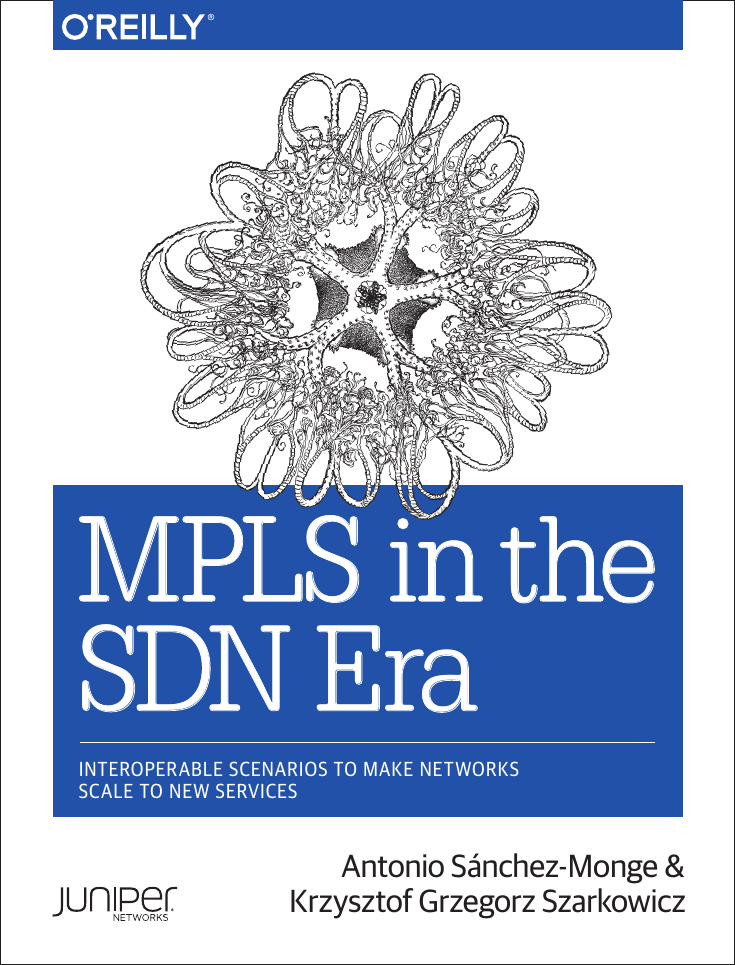
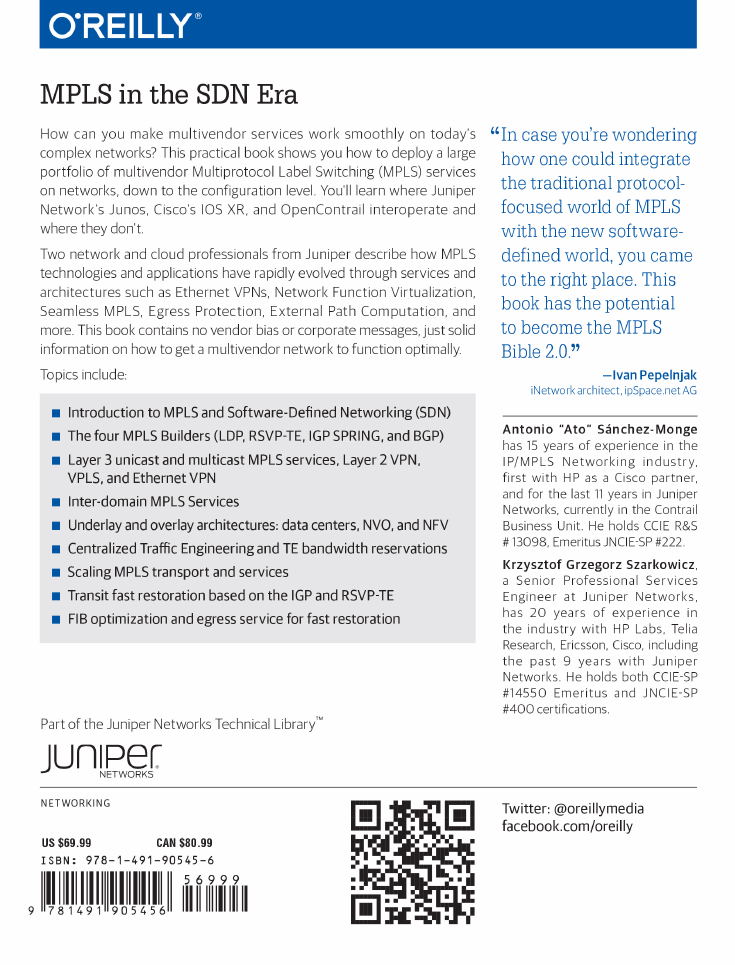
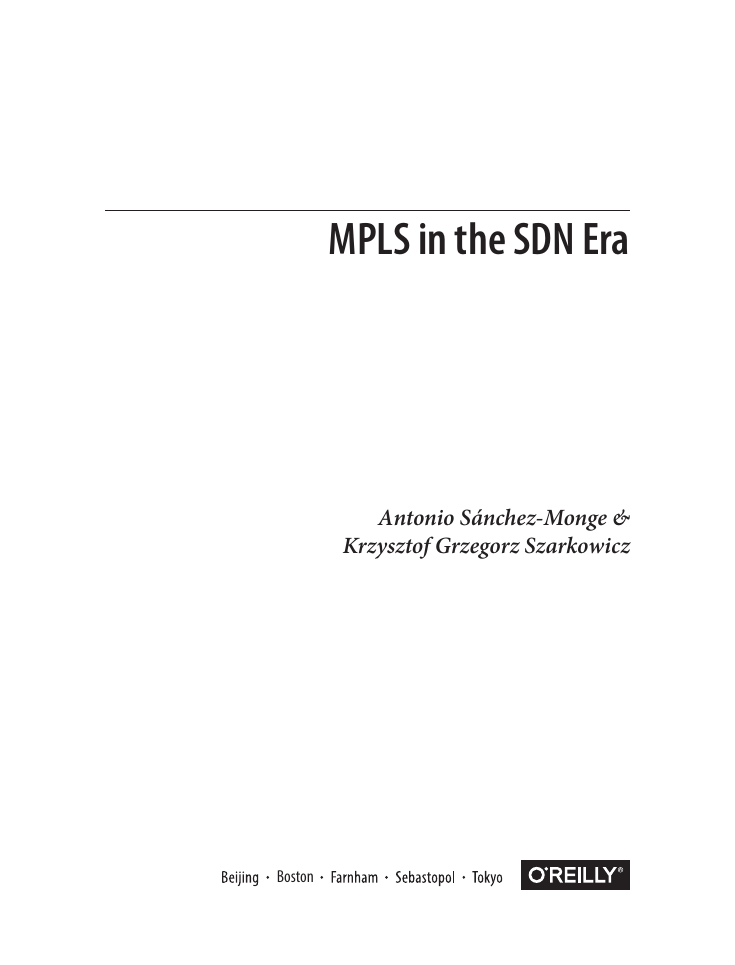
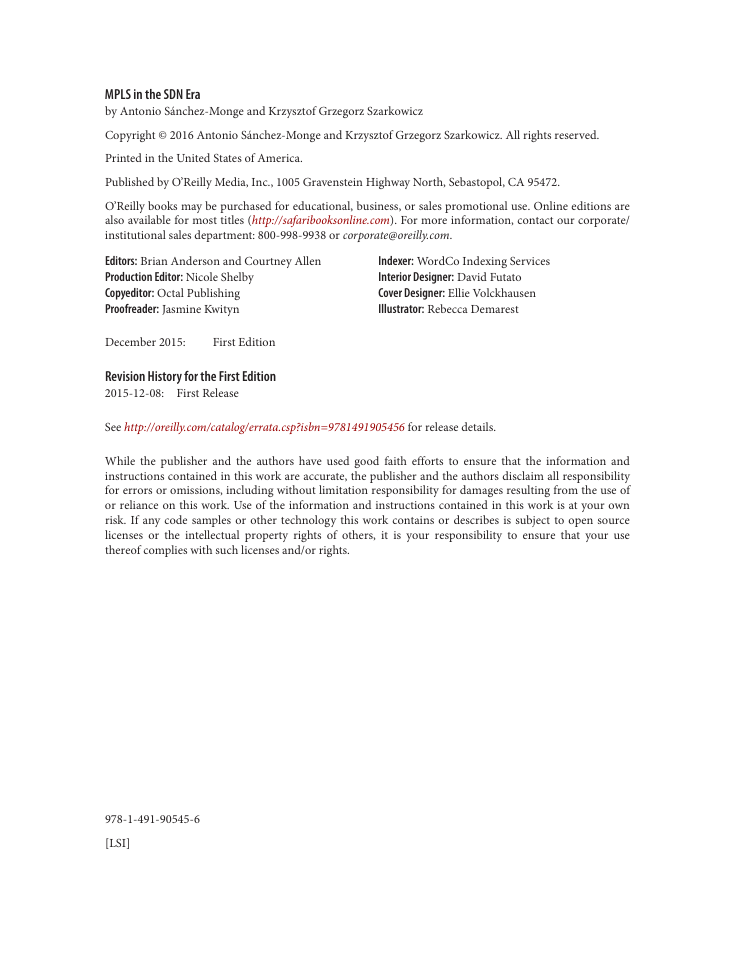
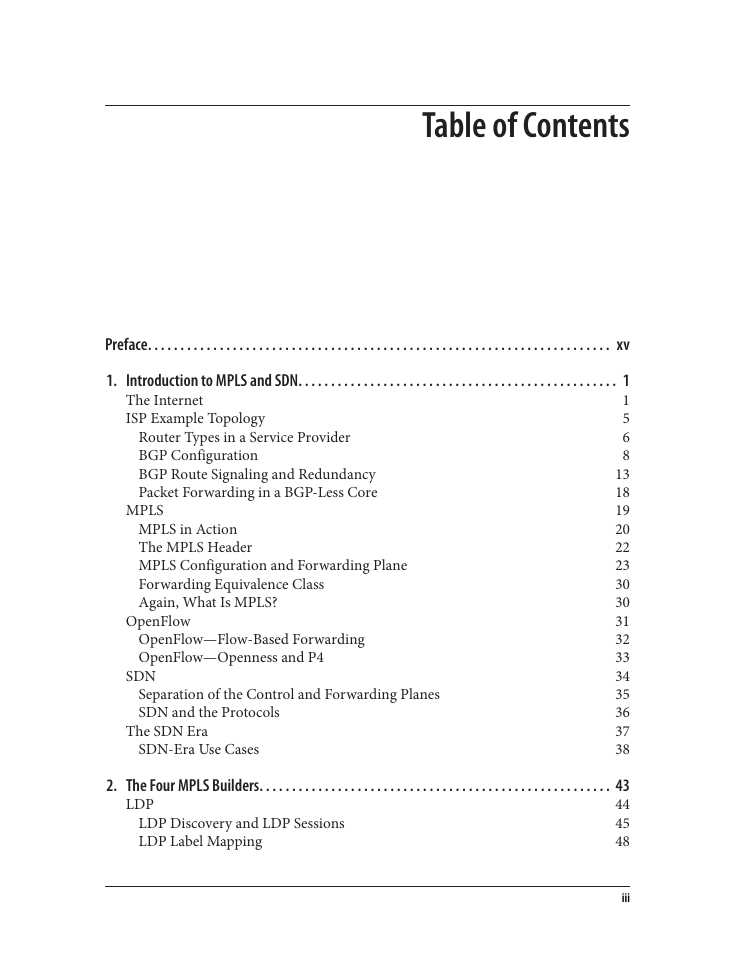
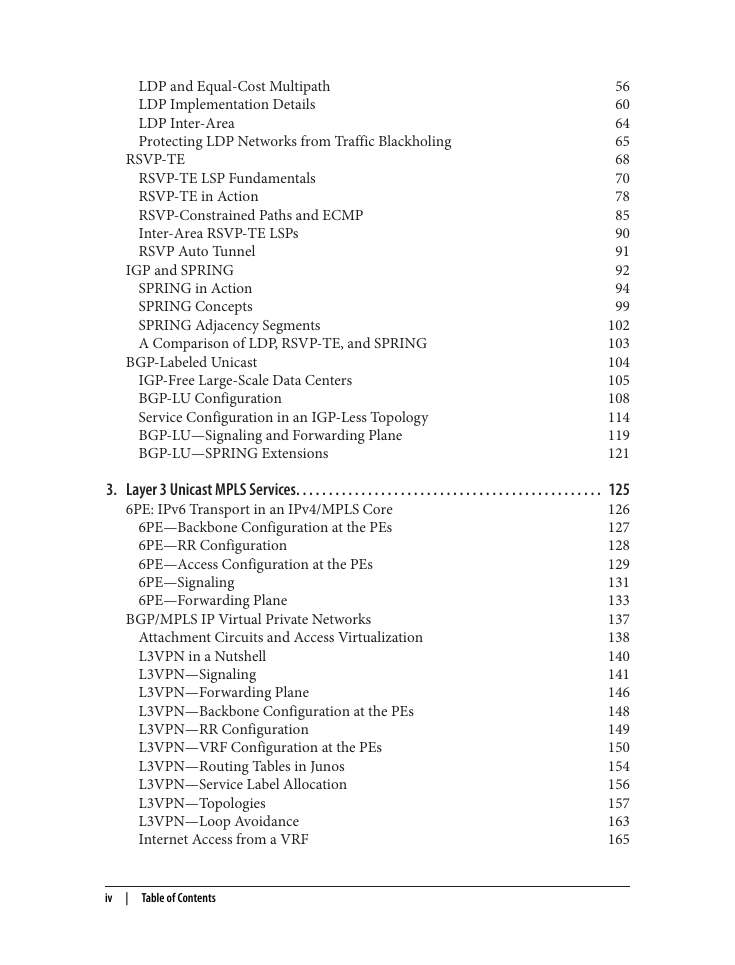

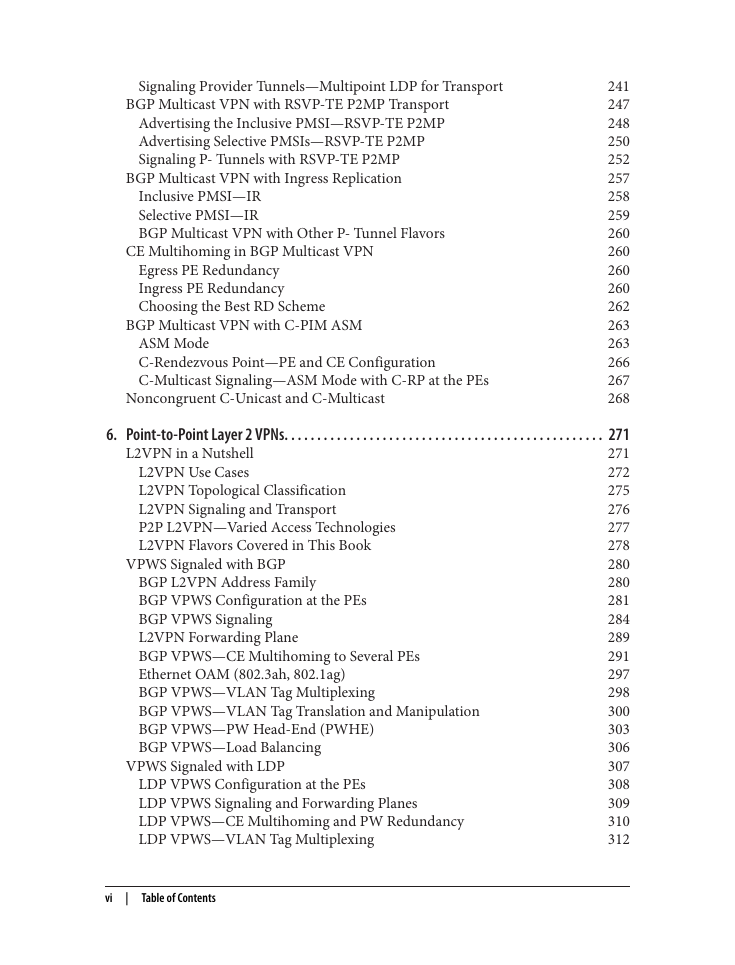








 2023年江西萍乡中考道德与法治真题及答案.doc
2023年江西萍乡中考道德与法治真题及答案.doc 2012年重庆南川中考生物真题及答案.doc
2012年重庆南川中考生物真题及答案.doc 2013年江西师范大学地理学综合及文艺理论基础考研真题.doc
2013年江西师范大学地理学综合及文艺理论基础考研真题.doc 2020年四川甘孜小升初语文真题及答案I卷.doc
2020年四川甘孜小升初语文真题及答案I卷.doc 2020年注册岩土工程师专业基础考试真题及答案.doc
2020年注册岩土工程师专业基础考试真题及答案.doc 2023-2024学年福建省厦门市九年级上学期数学月考试题及答案.doc
2023-2024学年福建省厦门市九年级上学期数学月考试题及答案.doc 2021-2022学年辽宁省沈阳市大东区九年级上学期语文期末试题及答案.doc
2021-2022学年辽宁省沈阳市大东区九年级上学期语文期末试题及答案.doc 2022-2023学年北京东城区初三第一学期物理期末试卷及答案.doc
2022-2023学年北京东城区初三第一学期物理期末试卷及答案.doc 2018上半年江西教师资格初中地理学科知识与教学能力真题及答案.doc
2018上半年江西教师资格初中地理学科知识与教学能力真题及答案.doc 2012年河北国家公务员申论考试真题及答案-省级.doc
2012年河北国家公务员申论考试真题及答案-省级.doc 2020-2021学年江苏省扬州市江都区邵樊片九年级上学期数学第一次质量检测试题及答案.doc
2020-2021学年江苏省扬州市江都区邵樊片九年级上学期数学第一次质量检测试题及答案.doc 2022下半年黑龙江教师资格证中学综合素质真题及答案.doc
2022下半年黑龙江教师资格证中学综合素质真题及答案.doc